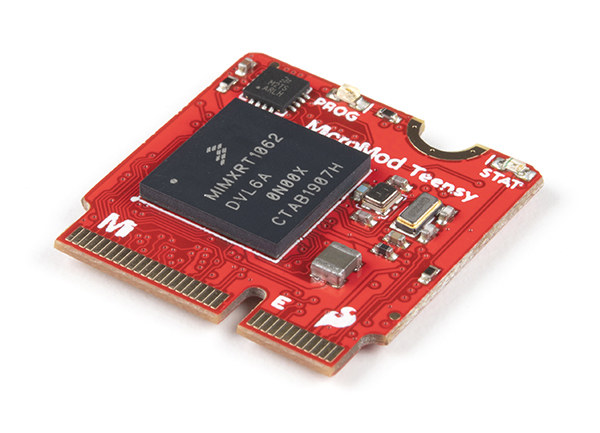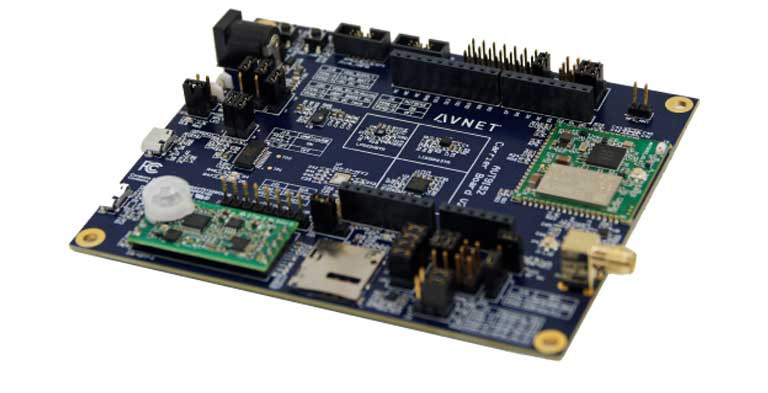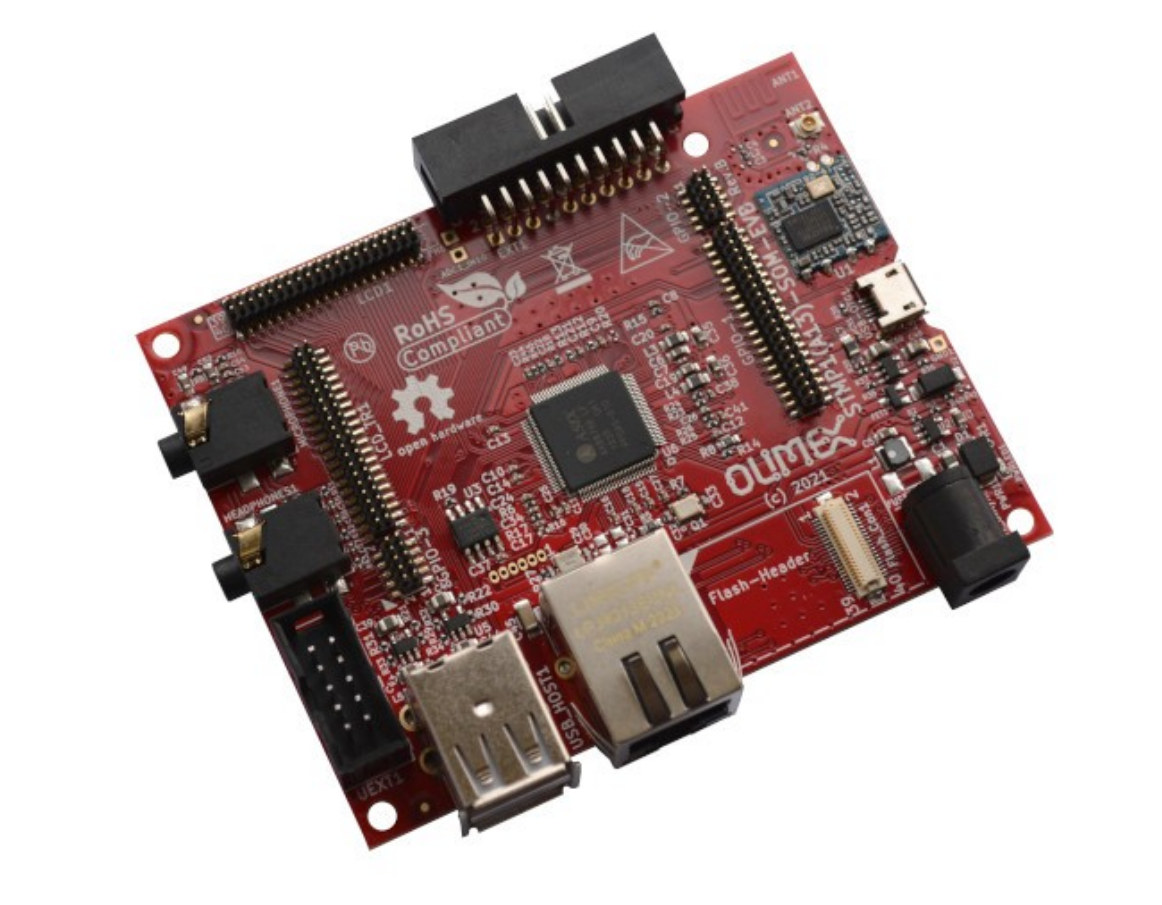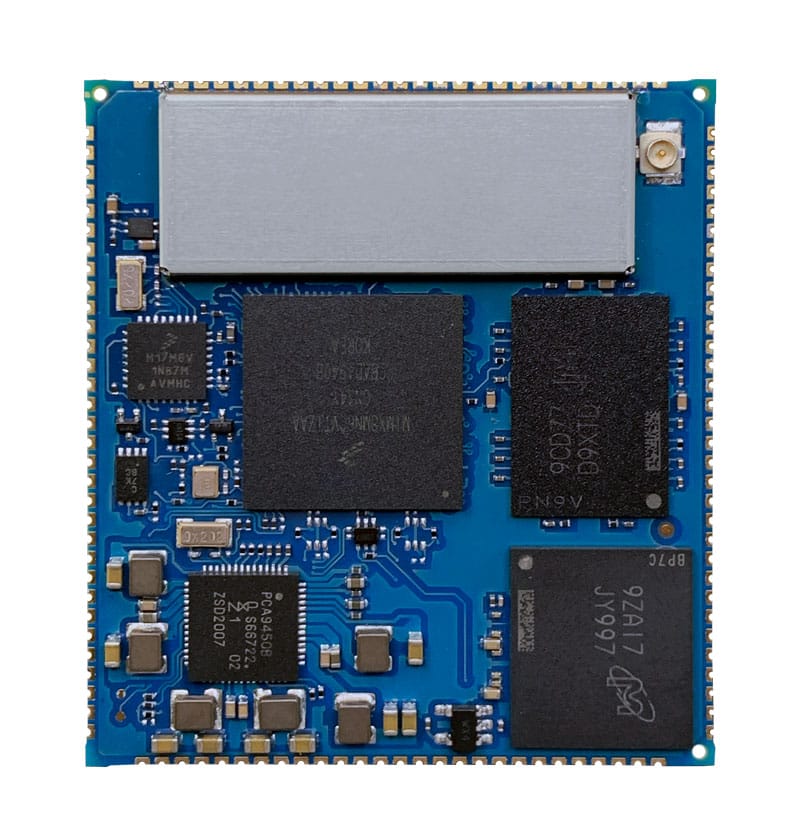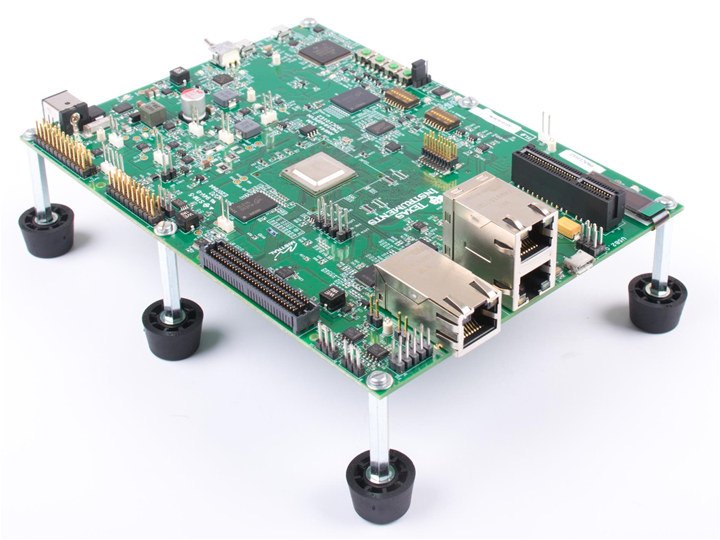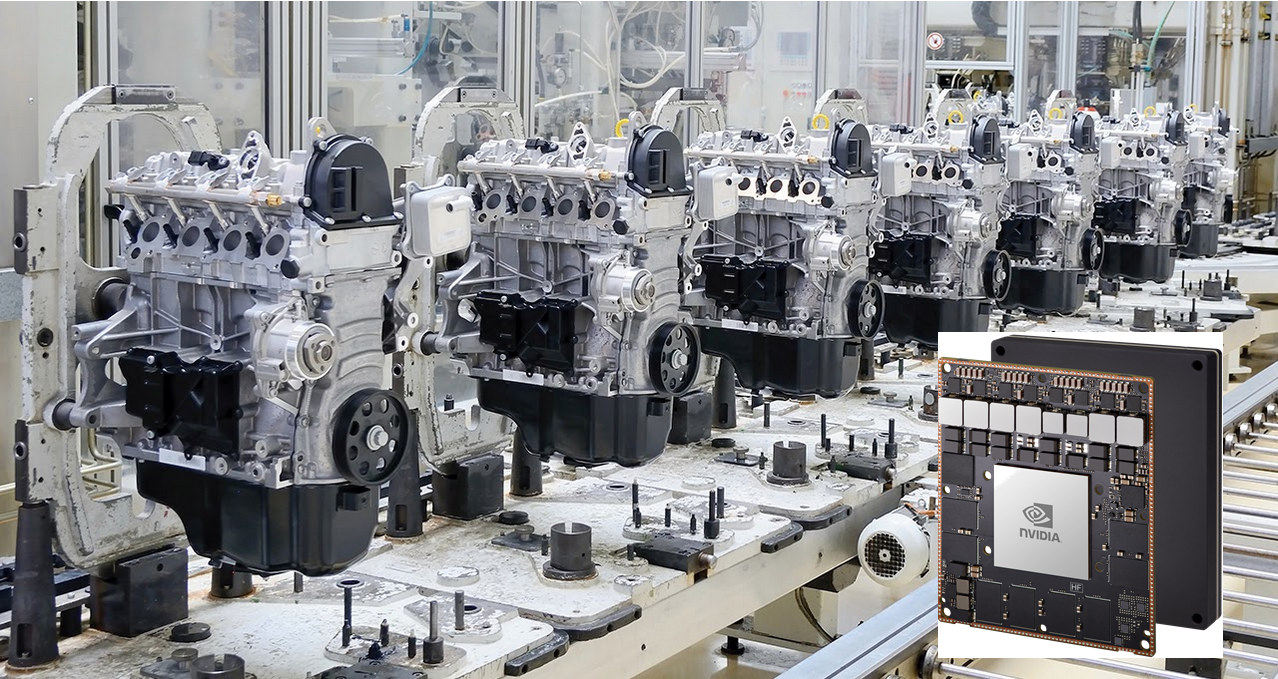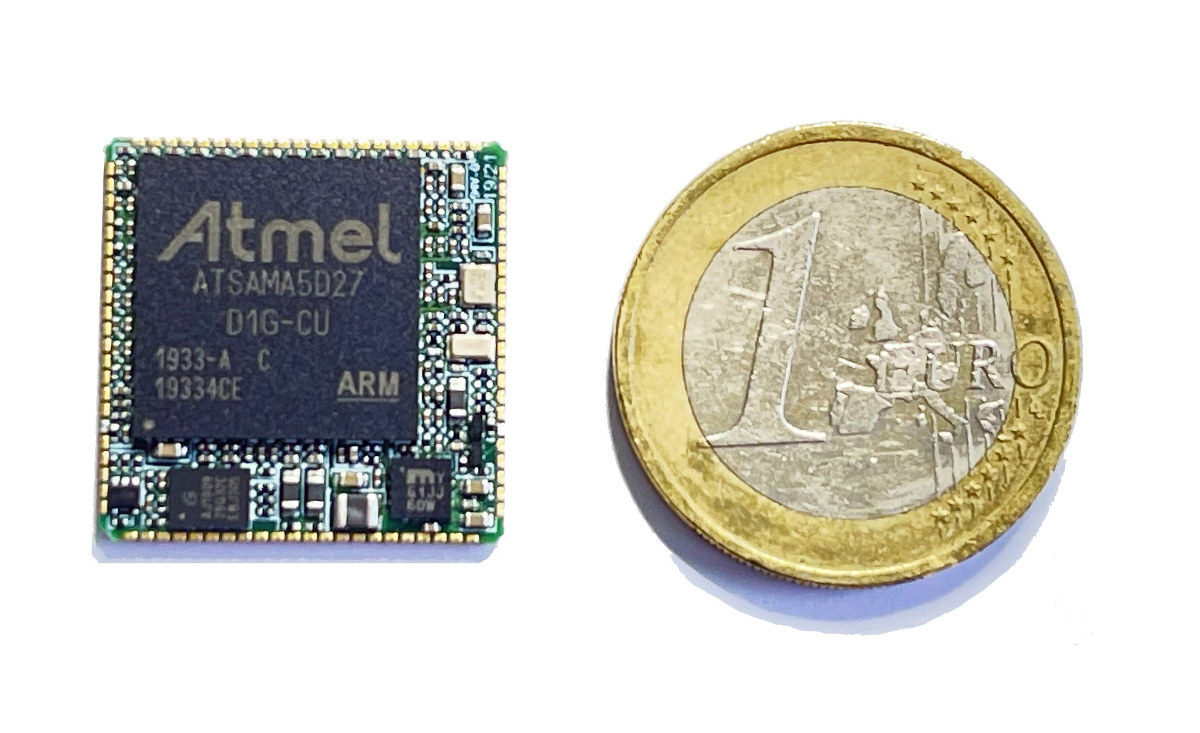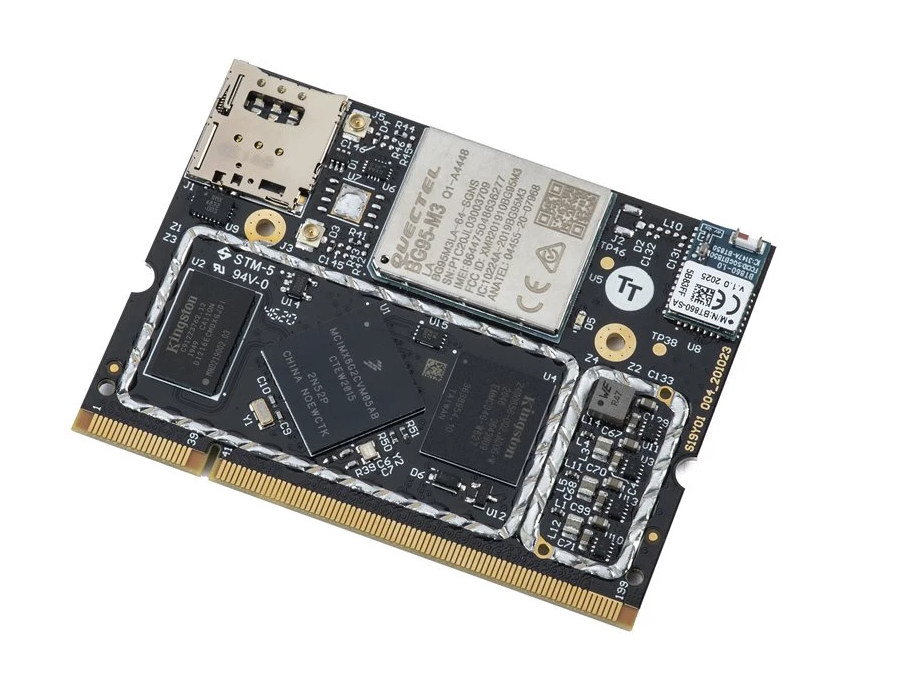Teensy 4.0, a low-cost board based on NXP i.MX RT1062 Arm Cortex-M7 crossover processor, is now getting a little brother with MicroMod Teensy following the same M.2 form factor as other Sparkfun MicroMod boards. Born from a collaboration between PJRC and Sparkfun, MicroMod Teensy has essentially the specs of Teensy 4.0 but with larger flash memory, and the board will be fully supported by the Teensyduino add-on to the Arduino IDE as noted by Paul Stoffregen on Twitter. MicroMod Teensy specifications: SoC – NXP i.MX RT1062 Arm Cortex-M7 processor at 600 MHz with 1024KB RAM (512KB is tightly coupled), Storage – 16MB serial flash (instead of 2MB on Teensy 4.0) M.2 MicroMod connector with USB Device up to 480Mbit/sec: Capable of enumerating as a USB keyboard, mouse, joystick, MIDI, audio, and more USB Host up to 480Mbit/sec: Capable of interfacing to USB flash drives, mice, keyboards, and more 7x Serial […]
Avnet AVT9152 – nRF52840 & nRF91 IoT module and devkit
Avnet AVT9152 is an IoT module and development kit that combines two Nordic Semi wireless solutions, namely nRF52840 Bluetooth 5.2/LE multiprotocol SoC and nRF91 IoT cellular system-on-module with NB-IoT, LTE-M, and GPS connectivity. The module supports Avnet’s enterprise-ready IoTConnect Platform, and the development kit combines with IoT module with a 3-axis accelerometer, a 3-axis gyroscope, as well as pressure, temperature, relative humidity, ambient light, and motion (PIR) sensors to help with the development of IoT applications such as tracking devices, vending machines, points-of-sale, smart buildings, industrial IoT, and more. Avnet AVT9152 module – nRF52840 + nRF91 Key features and specifications: Wireless SoC/SiP Nordic Semi nRF9160 Cortex-M33 based system-in-package (SiP) with LTE-M/NB-IoT global carrier certification for LPWAN connectivity; support for power save mode, PSM and eDRX Nordic Semi nRF52840 Cortex-M4F microcontroller with Bluetooth 5.0 and Bluetooth LE for short-range communication Flexible LTE and GPS antenna options 50x castellated holes with UART, […]
Olimex STM32MP1 SoM and evaluation board support Linux 5.10
Olimex has just announced the availability of an STMicro STM32MP1 Cortex-A7/M4 powered system-on-module (SoM) and an evaluator board with respectively STMP15X-SOM available in extended and industrial temperature variants, as well as STMP1(A13)-EVB evaluation board that works with the new STM32MP1 module, as well as earlier A13-SOM Allwinner A13 based system-on-module. Beyond the hardware, the company told us their upcoming STMP1-OLinuXino-LIME2 SBC could support mainline Linux in February, and the company prepared some Linux 5.10 based Debian Buster and Ubuntu Focal images which are now also available for the STMP15X-SOM module. STMP15X-SOM system-on-module Specifications: SoC – STMicro STM32MP151/153/157 dual-core Cortex-A7 @ 650 to 800MHz and Arn Cortex-M4 real-time core @ 209 MHz System Memory – 256 or 512 MB DDR3L Storage – MicroSD card socket Audio – On-module audio codec Board-to-board connectors GPIO-1 40-pin connector with 39 GPIOs, 3x UARTs, 1x QuadSPI, 2x I2C, 2x eMMC GPIO-2 10-pin connector with USB […]
Digi ConnectCore 8M Mini SOM and Mini Development Kit for Industrial IoT Applications
Digi International has announced the Digi ConnectCore 8M Mini System-on-Module (SOM) which is an addition to its ConnectCore family modules. We saw the Android application development kit featuring earlier Digi Wireless modules based Freescale i.MX51 (ConnectCore Wi-i.MX51) and i.MX53 (ConnectCore Wi-i.MX53) in early 2012. The new Digi ConnectCore 8M Mini comes with a built-in Video Processing Unit specialising in vision use cases. The Digi ConnectCore 8M Mini SOM is an industrial i.MX 8M Mini quad-core system-on-module that comes with Arm Cortex-A53 cores, one Cortex-M4 core, and the Cortex-M0-based Digi Microcontroller Assist. This enables optimal power consumption while simultaneous maintenance of highly efficient performance. Main benefits of Digi Connect Core 8M Mini SOM Digi SMTplus form factor (40 x 45 mm) for flexibility and reliability while designing. Power management with both hardware and software support for low-power designs. Display and camera capabilities with graphics and video hardware acceleration make it suitable […]
TI AM64x 7-core processor is made for PLC’s, motor drives, industrial robots
Texas Instruments AM64x is a family of 64-bit Arm processors with functional safety designed for Programmable Logic Controllers (PLC), motor drives, remote I/O, and industrial robots. The top-end processor of the family, AM6442, comes with seven cores including two Cortex-A53 application cores, four Cortex-R5F real-time cores, and one Cortex-M4F isolated core. AFAICT, while the documentation is dated January 2021 and TI announced the processor in February in a blog post with a cryptic title, it was only first picked up by Embedded Computing in early May. Besides the processor itself, TI also provides an AM64x starter kit and a full-featured AM64x evaluation kit, and several companies are already preparing development boards and modules as we’ll see further below. TI AM64x processor AM64x key features & specifications: CPU cores Dual-core Arm Cortex-A53 processor @ 1.0 GHz with 256KB L2 shared cache with SECDED ECC, 32KB L1 D-cache, 32KB L1 I-cache Up […]
NVIDIA Jetson AGX Xavier Industrial module adds lockstep Cortex-R5 cluster, ECC RAM, and more
NVIDIA Jetson AGX Xavier is the most powerful module from the Jetson family packing 32 TOPS of AI inference performance. But with some customers wanting to use the embedded AI computer in harsher conditions, the company has now introduced a rugged version of the module with NVIDIA Jetson AGX Xavier Industrial. Some changes included a slightly lower performance (30 TOPS) to cater for an expanded temperature range, a dual-core Cortex-R5 cluster in lockstep, ECC memory, and compliance with shock and vibration standards. NVIDIA Jetson AGX Xavier Industrial specifications with bold highlights showing differences / new features: CPU – 8-core NVIDIA Carmel Arm v8.2 64-bit CPU with 8MB L2 + 4MB L3 GPU – NVIDIA Volta architecture with 512 NVIDIA CUDA cores and 64 Tensor cores for up to 20 TOPS (INT8) (Note: the standard version support 22 TOPS) DL Accelerator – 2x NVDLA accelerators for up to 10 TOPS (INT8) […]
HaneSOM is a 4 cm2 Arm Linux module powered by Microchip SAMA5D2 SiP
DAB Embedded HaneSOM is a tiny (4 cm2) system-on-module based on Microchip SAMA5D2 Arm Cortex-A5 processor running Linux, which could make it the world’s smallest Linux module. The small size is made possible by the use of a SAMA5D2 system-in-package that also integrates 128MB DDR2, and the only two other chips on the modules are a 4MB flash (GD25Q32) and the PMIC (MIC2800). HaneSOM specifications: SiP – Microchip ATSAMA5D27C-D1G system-in-package with SAMA5D27 Arm Cortex-A5 processor @ 500 MHz with NEON, 128MBytes DDR2 System Memory – 128MBytes DDR2 memory Storage – 4 MBytes of QSPI Flash Castellated holes giving access to signal for: Storage – SD card interface Display – 24-bit RGB LCD TFT interface; capacitive touch controller Camera – Up to 5MP CMOS camera sensor support Audio – SSC, I2S Networking – 10/100M Ethernet USB – USB 2.0 (OTG and host) SPI, I2C, UART, CAN-FD, 12-bit ADC, PWM Misc – […]
Cellular system-on-module integrates Quectel BG95-M3 Cat M1, NB-IoT, GPS module
Most systems-on-module come with a processor, memory, storage, and maybe a PMIC and some extra chips such as an Ethernet PHY. Some add wireless connectivity with a WiFi & Bluetooth module, but TT Electronics S-2Connect Creo SoM is more unusual as a Linux-powered SO-DIMM module with built-in Cat M1 & NB-IoT cellular connectivity, as well as GPS. This is implemented through Quectel BG95-M3 multi-mode LPWA module and an eSIM and a micro SIM socket in combination with an NXP i.MX 6UL processor Cortex-A7 processor along with 256MB RAM and a 4GB eMMC flash. S-2Connect Creo SoM specifications: SoC – NXP i.MX6UL Cortex-A7 System Memory – 256MB DDR3L Storaage – 4GB eMMC flash Connectivity LTE Cat M1 (eMTC), Cat NB2 (NB-IoT) 2G/EGPRS fallback via Quectel BG95-M3 module based on Cortex-A7 processor running ThreadX Bands LTE – 1, 2, 3, 4, 5, 8, 12, 13, 18, 19, 20, 25, 26, 27, 28, […]


